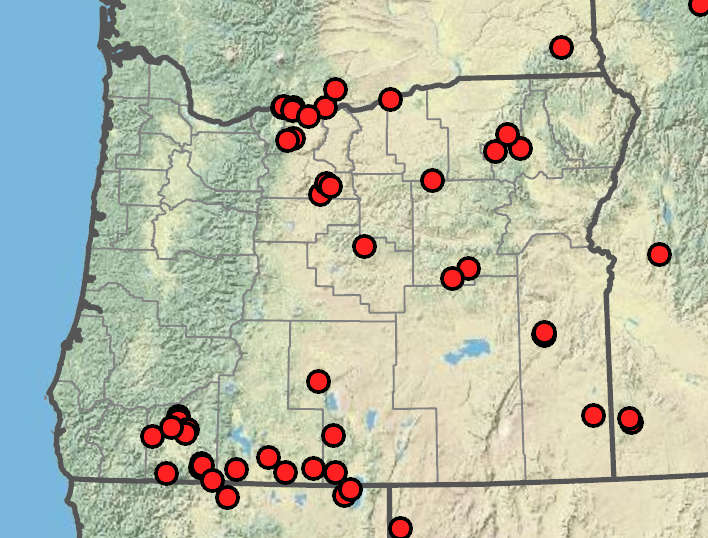Juncus trilocularis
foothill rush
thin and wiry;
blade flat and slightly inrolled;
auricles soft and thin distally, 0.3–3 mm; dull, rounded or acute; dirty white.
cymes, 2–20 cm, usually open;
bractlets subtending flowers acute to acuminate, often aristate.
tepals 6, 3.3–5.1 mm; greenish to pale brown, nearly concolorous;
tips acuminate;
outer tepals distinctly longer than inner tepals;
stamens 6;
filaments 0.5–0.8 mm;
anthers (0.6)0.8–1.7 mm;
styles 0.3–1 mm.
2.8–4.1 mm; shorter than the tepals, pale brown to dark brown;
apex truncate to notched (acute), crested, 3-chambered.
0.4–0.6 × 0.2–0.3 mm, apiculate, reticulate.
Juncus trilocularis
Seasonally damp meadows, springs, shores, creek banks, moist open forest, ditches. 300–1900m. BW, Col, ECas, Owy, Sisk, Casc. CA, ID, NV, WA. Native.
This is an uncommon species found east of the Cascade Range and in the Siskiyou Mountains that has long been confused with Juncus brachyphyllus, a plant of grasslands and glades in the Midwest, which occurs no further west than Nebraska.
Peter Zika
- Local floras:
CA,
OR,
WA
- Local Web sites:
CalFlora,
CalPhotos,
Flora NW,
PNW Herbaria
WildflowerSearch
iNaturalist (observations)
USDA Plants Database
- LBJ Wildflower Center
- SEINet
- Plants of the World Online
- Encyclopedia of Life
- Wikipedia
- Google Image Search
